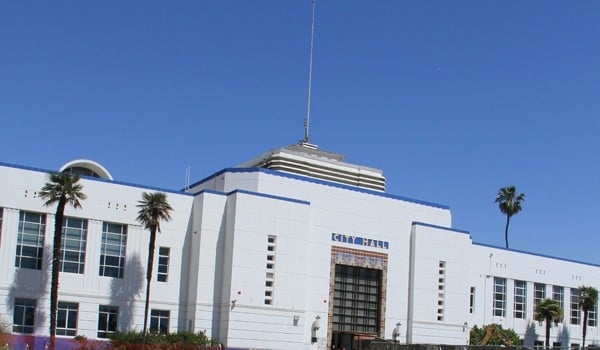Telecommunications companies trying to install cell antennas in Santa Monica will have to follow new design standards, provide justification for choosing sites and inform nearby residents of pending construction.
City Council voted Tuesday to authorize the Public Works Director to create regulations for cell antennas installed on existing infrastructure, such as streetlights and telephone poles. The regulations will also require companies to provide proof that antennas operate in compliance with Federal Communications Commission rules on radio frequency emissions.
The City has received an increased number for applications for the antennas in 2018 as telecommunication companies continue to upgrade their wireless networks, and new federal regulations shorten the permitting process from 150 to 60 days. About 100 sites have been permitted this year.
Many residents have expressed concern about the proliferation of the antennas. In August, three individuals appealed plans to install antennas on street poles near their homes because they believe their appearance will impact property values and the radio frequencies they emit could create health risks.
City Council rejected the appeals because federal law prohibits the denial of an antenna based on the environmental effects of radio waves, provided the equipment complies with FCC regulations.
City rules at the time only allowed for consideration of four criteria when reviewing the applications: the proposed facility complies with all of the applicable laws, will not interfere with the use of the public right-of-way, uses camouflage or concealment elements to mitigate its impacts and complies with emissions standards.
The new standards result from the council directing staff to incorporate residents concerns into the appeal process so the council wouldn’t be overwhelmed with similar appeals.
The ordinance also bans appeals because recent FCC rules effectively limit the City’s discretionary authority to the adoption of objective standards.
Multiple representatives from Verizon and T-Mobile said at the meeting that allowing the Public Works Director to develop aesthetic and site justification standards contradicts those FCC rules.
“The ordinance leaves a lot of ambiguity, and standards, by their nature, should be predictable,” said Damien Huggard of T-Mobile.
Jonathan Kramer, an attorney the City consults on telecommunications matters, said staff did not codify the aesthetic standards in the ordinance so the Public Works Director could adjust the standards as laws and technology change and craft aesthetic standards for different parts of the city.
“The FCC would like us to create a single standard as to what aesthetics means, but the problem is ... different parts of the city have different feels and uses,” Kramer said. “There isn’t a single answer. What might be appropriate in front of the McDonald's on Pico might be very inappropriate downtown.”
The ordinance will go into effect Jan. 14.
madeleine@smdp.com









